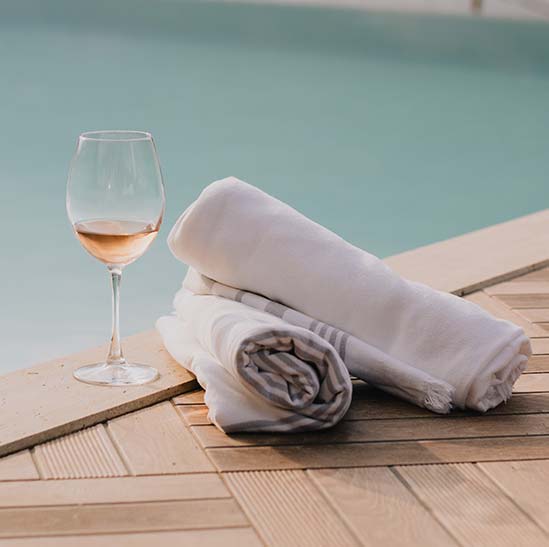What are the safety tips for using a sports recovery gun
What are the safety tips for using a sports recovery gun
Author
huanggs
Share
Author
huanggs
Share
When using a sports recovery gun, the importance of safety can’t be overstressed. Have I ever told you about the time my buddy decided to crank up his new device to the highest setting right off the bat? Bad idea. Instead of feeling relief, he ended up with a sore, red patch for days. Always start with a lower setting to familiarize yourself with the gun’s power. Most devices have a range between 1,200-3,200 percussions per minute. Knowing your limits can save you from discomfort or even injury.
Speaking of settings, understanding the different attachments your sports recovery gun comes with can make a world of difference. For example, a round ball head is excellent for large muscle groups like the quadriceps, while a bullet head is more suited for trigger points. Investing time in reading the user manual can seem tedious, but it’s crucial. Did you know that incorrect usage can lead to reduced muscle elasticity over time? That translates to longer recovery periods and potentially lower performance on the field.
Timing is everything, especially post-exercise. According to sports scientists, using the gun within 30 minutes post-workout significantly reduces muscle stiffness and speeds up the recovery cycle. Ever felt like you could barely move the day after an intense session? That’s often due to lactic acid buildup. A targeted 10-15 minute massage with the gun can alleviate this and enhance blood circulation, which brings oxygen and nutrients to sore muscles faster.
Okay, let’s talk about duration. The Mayo Clinic suggests that overuse might do more harm than good. They recommend limiting each muscle group session to around 2 minutes. I’ve seen people in the gym treating their muscles like pizza dough for 10 minutes straight. Not smart. Going beyond the recommended duration can cause muscle fatigue instead of relieving it.
Knowing where to use the gun is just as important as knowing how to use it. Stay away from bony areas and important nerve clusters. Nerve damage might not just spoil your gym routine but could have long-term repercussions. I’ll never forget reading about that athlete who ignored this advice and ended up with a much longer recovery period due to a nerve issue. There’s no need to mess around with your health when it can be easily avoided.
Mind your posture while using the device. Holding the gun at awkward angles can strain your wrists or arms. Ergonomically designed sports recovery guns can make a difference here; they weigh between 1-3 pounds, making them easier to handle without causing undue stress on your joints. Strained wrists are the last thing you need when you’re trying to recover.
Understanding battery life, believe it or not, plays a role in safety too. Many quality guns have a battery life of up to 6 hours, but this can go down with intense usage. A dying battery might cause the gun to perform poorly, leading you to overcompensate by pressing harder. Don’t do this. Charge your tool regularly to maintain optimal performance and avoid mishaps.
Now, let’s face the elephant in the room: price. A good quality sports recovery gun ranges from $100-$600. The cheaper alternatives might look tempting, but they often come without a warranty and might lack crucial safety features. Investing in a reliable brand can save you not just money in the long run, but also potential trips to the physiotherapist.
Is noise an issue for you? Most people overlook this factor, but trust me, a device operating at 50-60 decibels is much more pleasant than those that sound like a jackhammer. Continuous exposure to loud noise isn’t just annoying; it can lead to headaches or increased stress, making what should be a relaxing experience anything but.
If you’re considering gift-giving, make sure the recipient understands these safety guidelines. I gifted one to my dad last Christmas, along with a set of printed instructions. He initially looked at me like I’d handed him homework, but later he was thankful. Without the instructions, he could have easily used it incorrectly and hurt himself. Basic guidance can go a long way here.
Some industry experts even recommend combining the use of the gun with traditional recovery methods like stretching and foam rolling. Incorporating other methods ensures you’re not over-relying on one tool, thereby balancing your recovery routine effectively. Flexibility training and other forms of stretching can complement the pressure applied by the gun for more rounded muscle care.
Another crucial aspect often overlooked is hydration. Stay hydrated to ensure maximum benefit from your sessions. Muscles are around 70% water, and dehydration can counteract the benefits of any recovery tool. Feeling cramps during or after a session? Often, it’s tied to inadequate fluid intake. Drink up to optimize muscle relaxation and overall recovery.
What about kids and teens? The American Academy of Pediatrics advises against using such devices on individuals under 18 without professional medical supervision. Sports recovery guns are designed for mature muscle groups and an adult’s pain tolerance. I once saw a news segment warning against adolescents using these tools due to their developing bodies. Always consult a healthcare provider if there’s any doubt.
Remember, it’s tempting to jump into new techniques based on trends and peer recommendations. Always listen to your body and, if in doubt, consult a professional before integrating a sports recovery gun into your routine. This approach helps mitigate risks, ensuring you reap maximum benefits safely. For more about this, visit Sports recovery gun.





